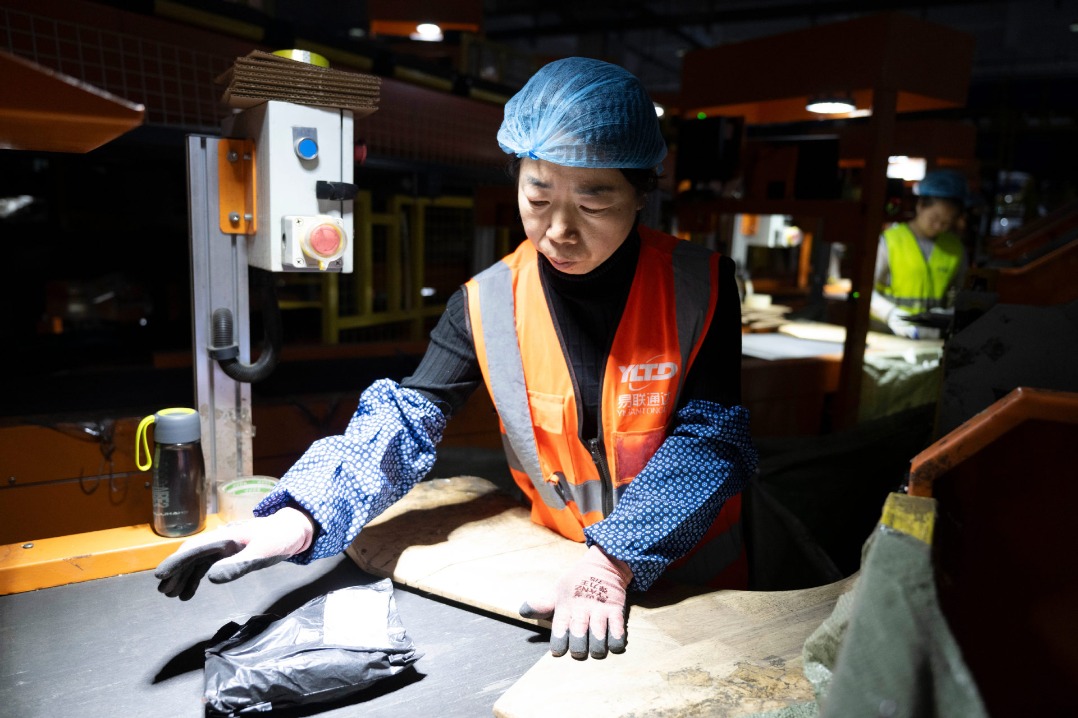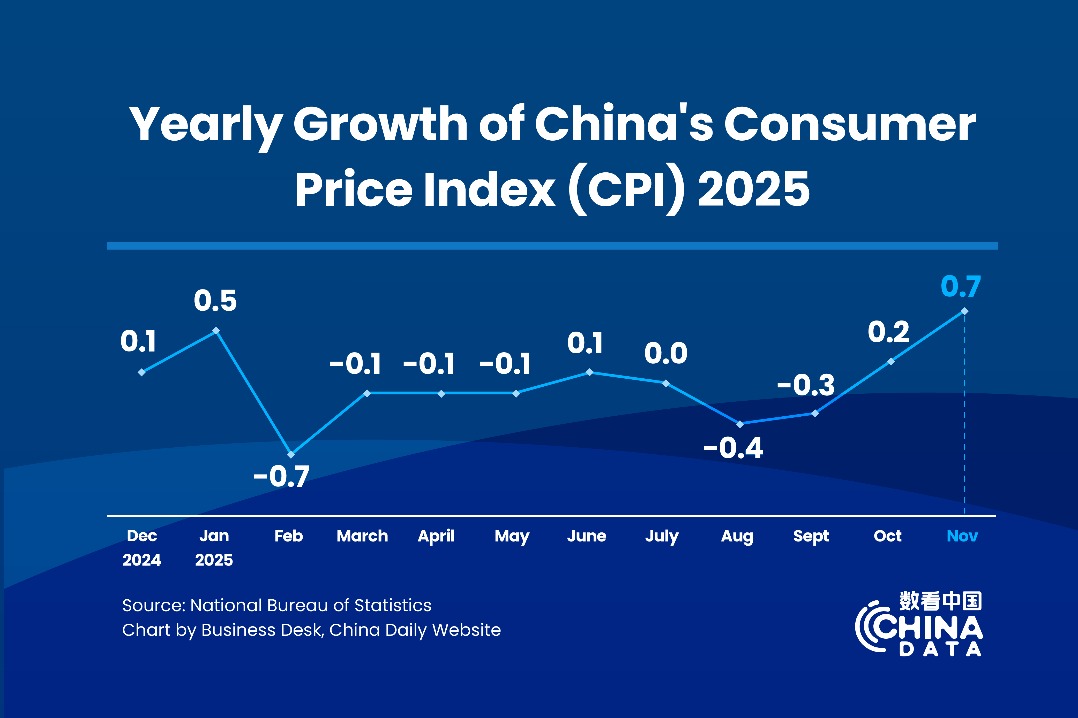As July policy takes effect, more steps can help


On July 24, the Communist Party of China Central Committee's Political Bureau held an important policy meeting. Attendees noted that while the country's economy was witnessing steady recovery, it was also confronting new challenges and difficulties, most of which arose from insufficient domestic demand, difficulties facing some enterprises, risks and hidden dangers in key areas, as well as a gloomy and complicated external environment.
As a result, the meeting called for further increasing macroeconomic policy regulation, with a special focus on expanding domestic demand, shoring up confidence and guarding against risks. The decisions made at the meeting were soon translated into a package of fiscal and monetary policy moves, especially those related to property, industry, consumption and employment.
Various macroeconomic policies are being more effectively coordinated, as a new round of Party and State institutional reforms this year have better addressed the shortcomings of a unified regulatory model.
In addition, policy effects have begun to kick in. To begin with, the purchasing managers index for China's manufacturing sector jumped above the boom-or-bust line of 50 in September, representing expansion, with notable improvements seen in the subindexes for production and new orders.
The nonmanufacturing index saw business activity expansion experience upturn momentum in September. In particular, the subindex for the construction sector climbed 2.4 percentage points compared with August as seasonal factors, such as typhoons, weakened and local government bonds were issued at a faster pace.
Demand-side indicators showed that from January to August, national fixed-asset investment grew steadily, with high-tech firms' investment growth rate reaching 11.3 percent, highlighting momentum for high-quality development.
Commodity consumption also showed signs of recovery, with retail sales of commodities in August increasing by 3.7 percent compared with the previous year, an acceleration of 2.7 percentage points from July's growth rate.
In this context, the sales growth rates for cosmetics, communication devices, gold, silver and jewelry, as well as furniture, all demonstrated a significant improvement. Overall, both consumption and investment were characterized by a steadily rising tendency.
Export dynamics improved in September. Exports grew by $14.3 billion from August on a month-on-month basis last month, the highest level in recent years for the same period, despite a 6.2 percent year-on-year fall in US dollar terms, which was still better than anticipated.
Driven by domestic demand, the year-on-year growth rate of industrial output accelerated by 0.8 percentage point in August compared to July, industrial enterprise profits saw a turnaround from a decline to an increase of 17.2 percent on an annual basis. Meanwhile, industrial development continued its transition toward greener and more intelligent future.
Overall, a number of encouraging signs have emerged in the Chinese economy, along with a growing prominence of structural transformation and high-quality development, and the policy effects of the macroeconomic policy mixes implemented since August have begun to gain traction. That being said, the most recently available numbers also reveal certain difficulties.
First, it is clear from financial statistics that there is a lack of capital efficiency and faith in the cyclical process of the Chinese economy. For instance, the growth rate of this year's M2, a broad measure of money supply that covers cash in circulation and all deposits, has continued to remain above 10 percent.
The M2 growth rate has, nevertheless, remained higher than the growth rate of aggregate financing since the first quarter of 2022. In September, the M2 growth rate came in at 10.3 percent while the aggregate financing growth rate stood at 9 percent.
Aggregate financing is more of a measure of new financing, whereas M2 represents savings deposits. The difference between the growth rates of the M2 and aggregate financing suggests that after new financing has entered the real economy, consumer willingness and ability to spend, and expenditure efficiency, lack vibrancy.
Second, prices continue to remain modest. Prices in September remained at the same level as a year earlier. Despite some signs of improvement, prices are still generally sluggish.
Third, the first week of September saw a 17.58 percent increase in the number of pre-owned home listings following the implementation of new real estate policies in August, with first-tier cities seeing a 58.76 percent increase. In this approach, the current macroeconomic policy is proving effective.
In the past, however, stimulus measures often caused the Chinese economy to quickly overheat. The nation's economy is now more easily cooled than overheated, thus slowing the process of policy-driven economic growth.
The policy mix in the second half has proved effective, though its marginal utility is gradually fading. There are two reasons for this.
First, balance sheets were hit hard during the COVID-19 pandemic, and it will take time to fully recover.
Second, the structure of the current Chinese economy has changed, and there is an adjustment in the policy transmission mechanism, which must take both incremental factors and the stock market into account in an integrated manner.
To enhance the efficiency of policy transmission, it's crucial to stimulate the vitality of market players, and the key to bringing out their vitality is repairing balance sheets. China is now experiencing a balance sheet impact rather than a balance sheet recession in comparison to Japan.
After 1989, both stock indices and land values in Japan plummeted precipitously, while asset prices in China remained reasonably stable. Furthermore, Japan's corporate sector held a large amount of real estate, which magnified the balance sheet recession, whereas China's corporate sector held relatively little real estate, and China's special land system also made industrial land extremely cheap, which cushioned the downward property pressure to some extent.
From this perspective, it's imperative to intensify efforts to repair balance sheets over the short term by stimulating the vitality of market players. Over the medium and long terms, market-oriented reforms should be fully leveraged to improve the effectiveness of policy transmission.
Going forward, monetary policy should be harnessed to promote aggregate demand and assist in balance sheet repair. But monetary policy must also respond to structural difficulties in areas such as real estate. While monetary policy is having a positive aggregate effect, it is vital to increase coordination between monetary and fiscal policies in order to realize more effective structural adjustment.
To maximize the aggregate effect of monetary policy, two specific policy recommendations exist. The first is to further lower reserve requirement ratio, thus cutting down on financing costs for financial institutions and helping them repair their balance sheets.
Second is to further unclog the money-supply mechanism and shape a "money-supply anchor". Initially, China used land and exports as the anchor, but in the future, efforts should be made to reorientate the anchor based on intangible assets such as intellectual property rights and consumption.
In terms of fiscal policy, there is still room for increasing China's macroeconomic leveraging ratio. The balance of China's government debt stood at around $60.94 trillion at the end of 2022, which is not high by global standards. The debt structure, which is more tilted toward local government debt in China, is the main issue.
It is necessary to further modify the distribution of leveraging ratios, raise central government leveraging ratios and enhance social security and human capital expenditures for new urban residents, so as to push ahead the process of new urbanization.
Since there is currently a significant mismatch between local debt and local economic development, between costs and returns on local debt, and between maturities of investments and debt, it is imperative that in the second half, more attention be given to resolving local government debt burdens in order to clear the way for local government action. It is essential to continue advancing the reform of land financing and optimizing the taxation system during this process.
Further efforts should be made to fine-tune real estate policy. Urbanization could serve as an important fulcrum to support recovery of the property market since there is still space for expansion as China's urbanization rate is now only 65 percent, which is lower than the global average of 75 percent.
In addition, it is important to adapt to future changes in the real estate market on both the supply and demand sides. On the supply side, additional financing for real estate enterprises should be further scaled up. On the demand side, the number of first-home buyers is decreasing and the demand for improved housing is rising, so it is recommended that the second-home purchase policy should be liberalized on a national scale.
The role of the capital market in wealth management should be emphasized. In order to truly optimize the capital market environment, it is important to ensure the quality of new financing projects while paying closer attention to various violations in the capital market and further raising the penalty for infractions.
To sum up, the primary focus of policy orientation over the short term is to further open up channels for policy transmission, increase the effectiveness of policy transmission and repair balance sheets using a combination of monetary policy, fiscal policy, real estate policy, local government debt and the capital market.
Over the medium and long terms, it is necessary to intensify market-oriented reforms, sort out the channels through which the market plays its role and give good play to pricing incentives.
This article is an excerpt from the China Macroeconomy Forum's monthly analysis of China's macroeconomy in October.
The views do not necessarily reflect those of China Daily.



































